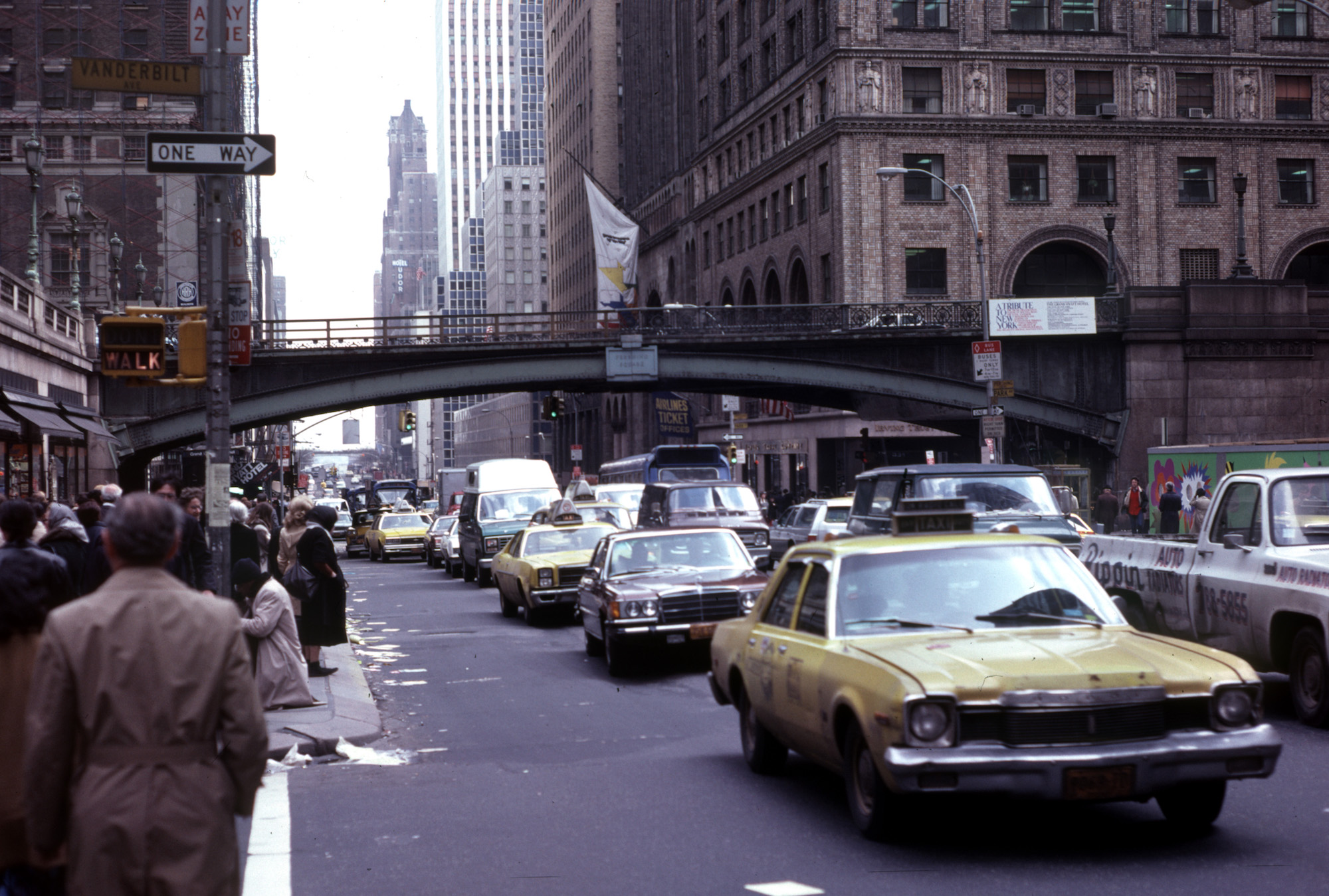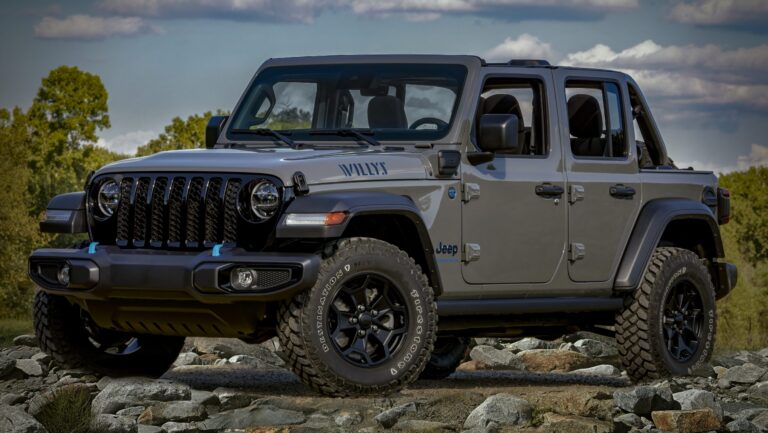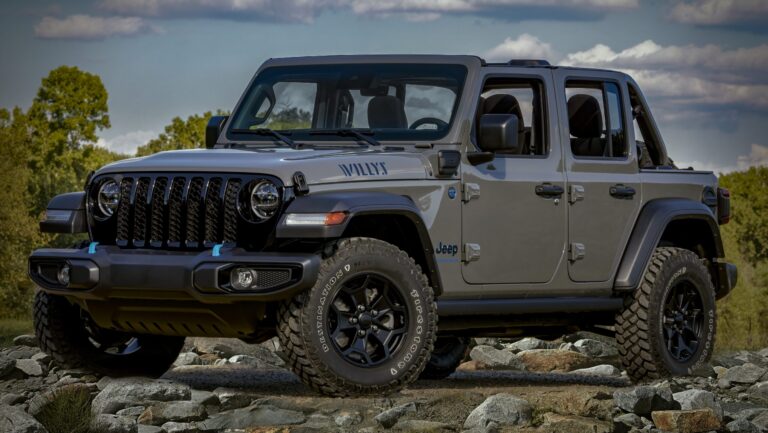1979 Jeep For Sale: A Comprehensive Guide to Owning a Vintage Off-Road Icon
1979 Jeep For Sale: A Comprehensive Guide to Owning a Vintage Off-Road Icon /jeeps.truckstrend.com
For many automotive enthusiasts, the thought of a "Jeep" conjures images of rugged durability, open-air freedom, and unparalleled off-road capability. Among the pantheon of classic Jeeps, the 1979 models hold a special place, representing a sweet spot in the brand’s history before significant changes in ownership and design. A "1979 Jeep For Sale" isn’t just an advertisement; it’s an invitation to own a piece of American automotive heritage, a vehicle that embodies the spirit of adventure and a simpler, more mechanically straightforward era.
This comprehensive guide will delve into everything you need to know about purchasing and owning a 1979 Jeep. Whether you’re a seasoned collector, an off-road enthusiast, or simply someone yearning for a tangible connection to the past, understanding the nuances of these vintage machines is crucial. From identifying the different models available in 1979 to navigating the buying process and preparing for ownership, we’ll equip you with the knowledge to make an informed decision and embark on your own Jeep adventure.
1979 Jeep For Sale: A Comprehensive Guide to Owning a Vintage Off-Road Icon
The 1979 Jeep Lineup: What Models Were Available?
In 1979, the Jeep brand, then under American Motors Corporation (AMC), offered a diverse range of vehicles, each catering to different needs but all sharing the brand’s core DNA of ruggedness and utility. When you see a "1979 Jeep For Sale," it most commonly refers to one of the following models:
- Jeep CJ-5: The shortest wheelbase civilian Jeep, the CJ-5 was a direct descendant of the original military Willys MB. Known for its compact size, maneuverability, and classic round headlights, it offered a truly visceral open-air driving experience. Power typically came from the AMC 258 cubic inch (4.2L) inline-six, though the optional 304 cubic inch (5.0L) V8 was also popular.
- Jeep CJ-7: Introduced in 1976, the CJ-7 featured a slightly longer wheelbase than the CJ-5, providing more interior room and improved stability on the road. This made it a more practical choice for many, while still retaining the iconic removable doors, fold-down windshield, and legendary off-road prowess. It shared engine options with the CJ-5, including the 258 I6 and 304 V8.
- Jeep Wagoneer/Cherokee (SJ Series): These full-size SUVs represented the more luxurious and family-oriented side of the Jeep brand. The Wagoneer was known for its upscale features, often including woodgrain trim, while the Cherokee offered a sportier, two-door variant (though four-door models were also available). Both were robust, body-on-frame vehicles, popular for their towing capacity and comfortable ride, often equipped with AMC V8 engines (360 or 401 cubic inches).
- Jeep J-Series Pickups: Based on the Wagoneer platform, the J-Series (J10, J20) were full-size pickup trucks. These were workhorses, offering significant payload and towing capabilities, and shared many components with their SUV siblings.

Understanding which model you’re looking at is the first step, as their values, parts availability, and typical usage can vary significantly.
Why Buy a 1979 Jeep Today? The Allure of Vintage Off-Roading
The decision to purchase a 1979 Jeep goes beyond mere transportation; it’s an embrace of a lifestyle and a connection to a rich history. Here are compelling reasons why these vintage machines continue to captivate buyers:
- Iconic Styling and Nostalgia: The CJ-5 and CJ-7, with their unmistakable grilles, exposed hinges, and upright stance, are timeless symbols of adventure. Owning one is a nostalgic trip back to an era of simpler, more rugged vehicles.
- Mechanical Simplicity: Compared to modern, computer-controlled vehicles, 1979 Jeeps are refreshingly basic. This mechanical straightforwardness makes them easier for DIY enthusiasts to maintain, diagnose issues, and even upgrade. Parts, especially for the CJ models, are surprisingly abundant.
- Proven Off-Road Capability: These Jeeps were built for the trail, not just for looks. Their robust solid axles, strong frames, and excellent approach/departure angles ensure they can tackle challenging terrain with ease, even by today’s standards.
- Community and Support: The vintage Jeep community is vast, passionate, and incredibly supportive. From online forums and social media groups to local clubs and dedicated parts suppliers, you’ll find a wealth of resources and fellow enthusiasts eager to share knowledge and experiences.
- Investment Potential: Well-maintained, original, or professionally restored 1979 Jeeps, particularly the CJs, have shown a steady appreciation in value. They are not just vehicles; they are appreciating assets for the right buyer.
- The "Jeep Wave": Owning a classic Jeep automatically enrolls you in an unspoken camaraderie with other Jeep owners, signified by the friendly "Jeep Wave."


Key Considerations Before Buying: What to Look For
Purchasing a vintage vehicle, especially one designed for rugged use, requires a keen eye and a thorough inspection. Here are the critical areas to scrutinize when evaluating a 1979 Jeep For Sale:
- Rust (The Silent Killer): This is the number one enemy of vintage Jeeps. Inspect the frame meticulously for rot, especially around the spring hangers, steering box mounts, and crossmembers. Check the body tub (floorboards, rocker panels, cowl, and wheel wells), fenders, and tailgate. Surface rust is manageable, but extensive perforation or structural rust can be a deal-breaker or require costly repairs.
- Engine Condition: For the AMC 258 I6, listen for excessive smoke (blue for oil, white for coolant), knocking, or ticking. Check for oil leaks. For the V8s, ensure smooth operation and proper oil pressure. Ask about recent maintenance, mileage, and cold starting behavior.
- Transmission and Drivetrain: Test all gears, both forward and reverse. Listen for grinding or difficulty shifting. Engage the 4×4 system (high and low range) to ensure the transfer case operates correctly. Check for leaks from the transmission, transfer case, and differentials.
- Suspension and Steering: Look for worn leaf springs (sagging), cracked bushings, and leaky shocks. Check for excessive play in the steering wheel, which could indicate worn steering box, tie rods, or ball joints. A tight steering system is crucial for safety and handling.
- Electrical System: Inspect wiring for signs of amateur repairs, bare wires, or corrosion. Test all lights, gauges, wipers, heater fan, and horn. Older electrical systems can be notoriously finicky.
- Brakes: Check the pedal feel (should be firm, not spongy). Inspect brake lines for corrosion and the condition of pads/shoes and rotors/drums. Many older Jeeps had drum brakes all around; an upgrade to front disc brakes is common and highly recommended.
- Interior: Assess the condition of seats, dashboard, and gauges. While easily replaced, a well-preserved interior indicates better overall care. Look for signs of water leaks or mildew.
- Paperwork and History: Always ensure the vehicle has a clear title. Ask for service records, receipts for parts, and any documentation of past work. This provides invaluable insight into the Jeep’s life.
- Modifications: Many Jeeps are modified. Evaluate the quality of any aftermarket parts or custom work. Poorly installed lift kits, engine swaps, or wiring can create more problems than they solve. Original or tastefully modified Jeeps often command higher prices.
The Buying Process: Where and How to Find Your 1979 Jeep
Finding the right 1979 Jeep requires patience and knowing where to look.
- Online Marketplaces:
- eBay Motors: Offers a wide range, from projects to restored examples, often with good photos and seller descriptions.
- Craigslist/Facebook Marketplace: Excellent for local finds, potentially leading to better deals from private sellers. Be wary of scams and always inspect in person.
- Bring a Trailer (BaT): For higher-end, well-documented, or unique examples. Auctions on BaT often fetch premium prices.
- Dedicated Jeep Forums/Groups: Many online communities have "for sale" sections where enthusiasts sell their vehicles directly.
- Classic Car Dealers: Some dealerships specialize in vintage 4x4s. While prices might be higher, they often offer inspected vehicles and potentially warranties.
- Auctions: Live auctions can be exciting but require quick decision-making and a solid understanding of vehicle valuation. Always inspect before bidding.
- Word-of-Mouth/Jeep Clubs: Networking within the Jeep community can uncover hidden gems not advertised elsewhere.
Practical Advice:
- Set a Budget: Be realistic about the total cost, including potential repairs, transportation, and registration.
- Bring a Knowledgeable Friend: If you’re not mechanically inclined, bring someone who is to help with the inspection.
- Pre-Purchase Inspection (PPI): For any significant purchase, consider hiring a reputable independent mechanic specializing in vintage vehicles to perform a thorough PPI. This small investment can save you thousands.
- Negotiate: Don’t be afraid to haggle, especially if you find issues during your inspection.
Owning a 1979 Jeep: Maintenance, Upgrades, and Challenges
Once you’ve purchased your 1979 Jeep, the journey truly begins. Owning a classic vehicle is a commitment, but a rewarding one.
- Routine Maintenance is Key: Stick to regular oil changes, lubrication of chassis components, fluid checks (transmission, transfer case, differentials, coolant), and tune-ups (spark plugs, points if applicable, carburetor adjustments). These simple tasks prevent major issues.
- Common Issues & Solutions:
- Carburetor Woes: The original Carter BBD carburetor can be finicky. Many owners upgrade to a more reliable Weber or fuel injection (e.g., Howell TBI).
- Rust Repair: Addressing rust promptly prevents it from spreading. Welding new metal is often necessary.
- Steering Play: Worn steering components are common. Replacing the steering box, tie rods, drag link, and ball joints (if applicable) can drastically improve handling.
- Electrical Gremlins: Older wiring can degrade. Replacing worn harnesses or systematically tracing faults can resolve issues.
- Popular Upgrades:
- Lift Kits and Larger Tires: Enhance off-road capability and aesthetics. Ensure proper geometry correction.
- Disc Brake Conversion: Upgrading front drum brakes to discs significantly improves stopping power and safety.
- Engine Swaps: For more power or reliability, common swaps include GM V8s (Chevy 350) or modern inline-six engines.
- Power Steering: Many early Jeeps lacked power steering. Adding it makes driving much more manageable.
- Seats and Roll Bar: Upgrading seats for comfort and adding a more robust roll cage for safety are common.
- Challenges:
- Fuel Economy: Don’t expect modern MPG figures. These vehicles are thirsty.
- Comfort: While charming, 1979 Jeeps are not known for their plush ride or quiet cabins. They are rugged by design.
- Parts Sourcing: While many parts for CJs are readily available from specialty retailers, some specific or obscure components for Wagoneers or J-Series might require more searching.
- Safety: They lack modern safety features like airbags, ABS, or crumple zones. Drive defensively.
- Insurance and Registration: Obtain classic car insurance, which often offers better rates and agreed-upon value coverage. Familiarize yourself with your state’s requirements for registering vintage vehicles.
1979 Jeep For Sale: Estimated Price Guide
The price of a 1979 Jeep can vary dramatically based on model, condition, originality, and modifications. This table provides a general range, but always remember that the market is dynamic.
| Condition Category | Description | Estimated Price Range (USD) |
|---|---|---|
| Project | Requires significant mechanical, body, and/or frame work. Not currently drivable or unsafe. Often missing parts. | $2,000 – $7,000 |
| Driver Quality | Drivable and mostly functional, but has cosmetic flaws, minor mechanical issues, or needs general maintenance/TLC. Suitable for regular use with some ongoing work. | $8,000 – $18,000 |
| Good Original | Well-preserved, mostly original condition with minimal rust and all systems functioning correctly. May have some minor patina or wear but is solid. | $19,000 – $30,000 |
| Restored/Show | Professionally restored to near-new or better-than-new condition. Excellent paint, interior, rebuilt mechanicals, and meticulous detailing. Ready for shows or discerning collectors. | $31,000 – $60,000+ |
| Highly Modified | Significantly upgraded for off-road performance (e.g., custom axles, engine swap, extensive roll cage) or unique custom builds. Price depends heavily on the quality and extent of modifications. | $15,000 – $50,000+ |
Note: CJ-7s generally command higher prices than CJ-5s due to their slightly longer wheelbase and popularity. Wagoneers/Cherokees and J-Series trucks will have different price curves, often lower for comparable condition due to less collector demand, though pristine examples can still be valuable.
Frequently Asked Questions (FAQ) about 1979 Jeeps
Q1: Are parts hard to find for a 1979 Jeep?
A1: For CJ-5 and CJ-7 models, parts availability is excellent. Many specialized vendors and even general auto parts stores carry common components. For Wagoneers/Cherokees and J-Series, some specific trim or body parts can be harder to source, but mechanical parts are generally available.
Q2: Can a 1979 Jeep be a daily driver?
A2: While technically possible, it’s not ideal for most. They lack modern comforts, safety features, and fuel efficiency. They are best enjoyed as weekend cruisers, off-road vehicles, or occasional drivers.
Q3: What’s the typical fuel economy?
A3: Expect anywhere from 8-15 miles per gallon (MPG), depending on the engine (V8s are thirstier), transmission, tire size, and driving style.
Q4: Is it a good first classic vehicle?
A4: Yes, especially the CJs. Their mechanical simplicity makes them relatively easy to work on, and the strong community support is invaluable for new classic car owners.
Q5: What are the common engine options?
A5: The most common engines were the AMC 258 cubic inch (4.2L) inline-six and the AMC 304 cubic inch (5.0L) V8 for CJs. Full-size Wagoneers/Cherokees often had the AMC 360 cubic inch (5.9L) V8, and less commonly, the 401 cubic inch (6.6L) V8.
Q6: How much will it cost to restore a 1979 Jeep?
A6: A full, professional, frame-off restoration can easily cost $20,000 to $50,000 or more, often exceeding the vehicle’s market value. A "driver quality" restoration or rolling restoration done by the owner will be significantly less but still require a substantial investment of time and money.
Concluding Summary
A "1979 Jeep For Sale" represents more than just a vehicle; it’s an opportunity to own a tangible piece of automotive history, a symbol of rugged American ingenuity and a passport to adventure. Whether you opt for the nimble CJ-5, the versatile CJ-7, or the more substantial Wagoneer/Cherokee, you’re investing in a machine built for durability and exploration.
While these vintage Jeeps require a discerning eye during purchase and a commitment to ongoing maintenance, the rewards are immeasurable. The joy of driving a classic, the camaraderie of the Jeep community, and the sheer capability of these off-road legends make the effort worthwhile. Approach the search with knowledge, patience, and a realistic understanding of the journey ahead, and you’ll soon be enjoying the unparalleled freedom that only a 1979 Jeep can offer. It’s not just a vehicle; it’s a lifestyle waiting to be lived.





